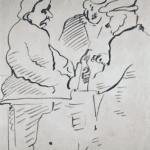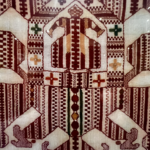One of the most unfortunate sovereigns in Russian history, Nicholas was thirteen when a terrorist bomb killed his grandfather, Tsar Alexander II. The teenage prince watched in dismay as his grandfather’s mutilated body was carried up the white marble steps of the Winter Palace leaving behind red blotches of Imperial blood. The new Tsar, Alexander III, moved his family to the safety of the fortified Gatchina Palace, 28 miles away from St. Petersburg. Nicholas’ early years were spent in the peaceful atmosphere of Gatchina and the sunny Livadia in Crimea.
Outside the Gatchina castle was the world full of hostility; within its thick walls, the life of the Imperial family was immersed in marital bliss. Family happiness awaited Nicholas in his own marriage to Princess Alice of Hesse-Darmstadt, granddaughter of England’s Queen Victoria. Before the wedding, Alice was received into the Russian Orthodox Church under the name of Alexandra Fedorovna.
“Nicholas inherited from his ancestors not only a giant empire, but also a revolution,” wrote later Leon Trotsky. The disastrous war with Japan, the rising Marxist movement, WWI and finally, the Bolshevik revolution took place during the twenty-two years of the reign of Nicholas II. The nation was disintegrating as the pageant of the Revolution unrolled, obliterating the Romanov dynasty.
The unconditional support of the tightly-knit family became Nicholas’ only joy after his abdication and subsequent arrest and imprisonment. It was still his when, in the dead of night, July 17, 1918, Nicholas, Alexandra, and the five royal children walked into the basement of the Ipatiev House in Ekaterinburg to be brutally shot by a Bolshevik firing squad.





You must be logged in to post a comment.